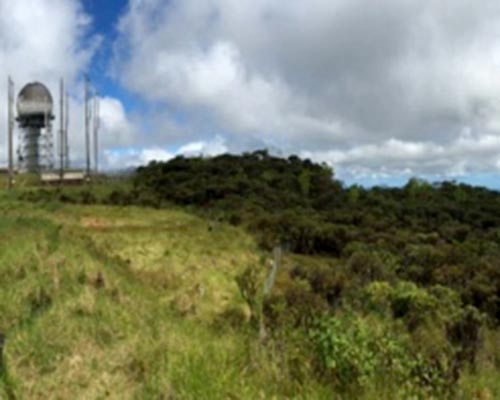The carbon balance in peatlands worldwide may shift from a sink (absorbing carbon) to a source (releasing carbon) this century primarily due to human impacts across the tropics, according to a paper published in Nature Climate Change by a multidisciplinary team of scientists, including Dave Beilman, associate professor of geography and environment in the College of Social Sciences.
“Our findings indicate that more than 100 billion tons of carbon could be released from peatlands by 2100, which points clearly to the need for the preservation and restoration of these valuable ecosystems,” said Beilman. “And it’s not just carbon that makes these areas priceless. These wetlands are triple hot spots of carbon sequestration, biodiversity and Earth system history.”
Wetlands can sink massive amounts of atmospheric carbon over time, creating peat and serving as one of the most substantial carbon pools on the planet. Although they cover only 3% of the global land surface, peat-accumulating wetland ecosystems, or peatlands, contain 25% of all carbon sequestered in the earth’s soil. That’s even more than the amount stored by the world’s forests.
According to the study, current climate change models have largely excluded peatlands, which modelers have long considered as effectively neutral—neither absorbing nor emitting net carbon.
“The future of peatlands is uncertain. It is not only vulnerable to climate change impacts, such as rising temperatures and sea levels, thawing permafrost, and increased risks of wildfires and droughts, but also to threats from direct human actions such as the destruction of the wetlands to create agricultural land,” added Beilman.
According to the research team, lessons must be learned from places like Indonesia, where most peatlands have been destroyed and converted to plantations. While achieving a balance between sustainable peatland use and economic needs has proven difficult, researchers hope that their study illustrates the critical need to protect the world’s peatlands with effective policies and include them in global models.
‘Time machine’ on Mount Kaʻala
Peatlands can also hold important local lessons. Beilman and Charly Massa, a postdoctoral fellow, co-authored a study based on a wetland on Mount Kaʻala. The research dives into centuries of climate and ecosystem history of Hawaiʻi using “fossil molecules” in sedimentary leaf waxes. The study was published in the journal Quaternary Science Reviews.
“Peat-forming wetlands are fascinating. They leave behind a record of their own history that is captured in their accumulated organic matter,” said Massa. “This site on Kaʻala holds a sedimentary history that goes back 50,000 years. That’s old enough that it holds information about the Last Glacial Maximum—a period when sea level was so low that Molokaʻi was connected to Maui, and so cold that the summit of Mauna Kea was covered by a glacier.”
According to Beilman, protecting and restoring peatlands is also one of the simplest ways to help address climate change. The challenge, he says, is that research has shown that Kaʻala displays a highly sensitive carbon sequestration response to past climate change.
“Climate and ecosystem shifts have been the name of the game long before humans in Hawaiʻi,” said Beilman. “The sedimentary time machine found at Kaʻala is like a deep-time buoy out here in the Pacific, keeping track of environmental history. If we know the right questions to ask, we can learn important lessons about where climate change may take us by knowing where we’ve been.”
Beilman and Massa plan to continue studying the peatland sediment in Hawaiʻi in order to help build a better understanding of past global temperatures, as well as the history of atmospheric dust in Hawaiʻi, which fertilizes ecosystems and is a feedback to climate change.
“Hawaiʻi’s mountain bogs are jewels of biodiversity and information relevant to policies and land management decisions designed to restore, preserve and sustainably manage our lands, and aid in addressing the challenges of climate change,” Beilman added.



